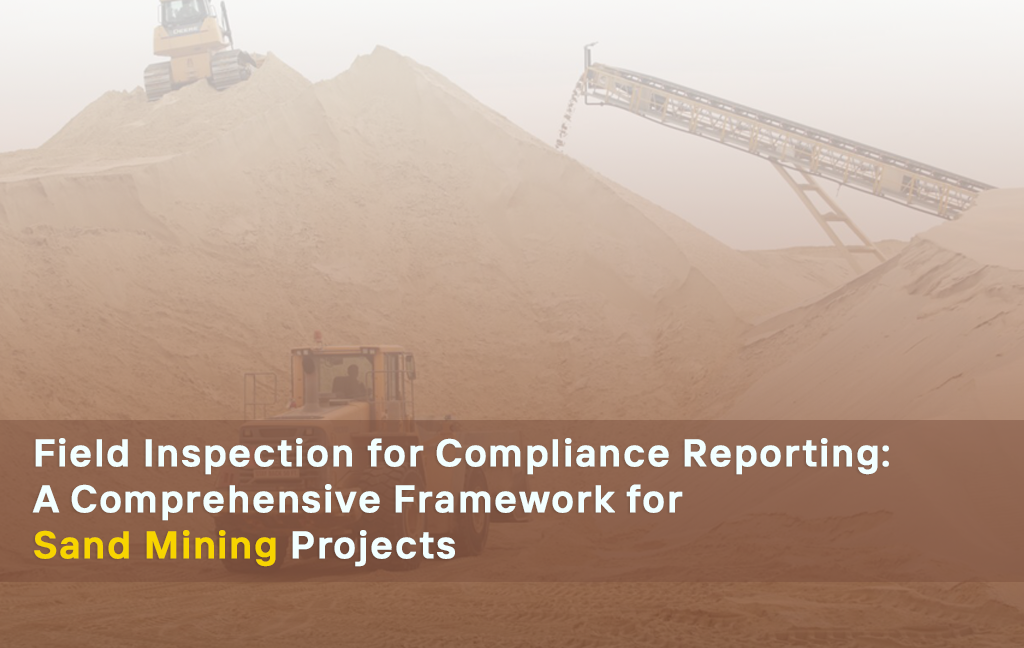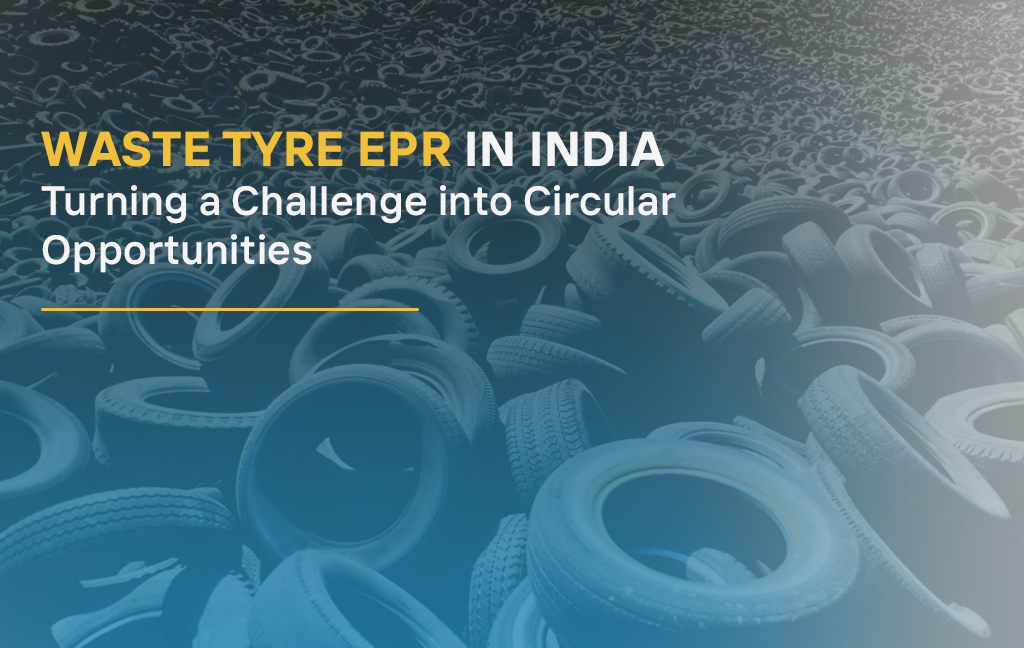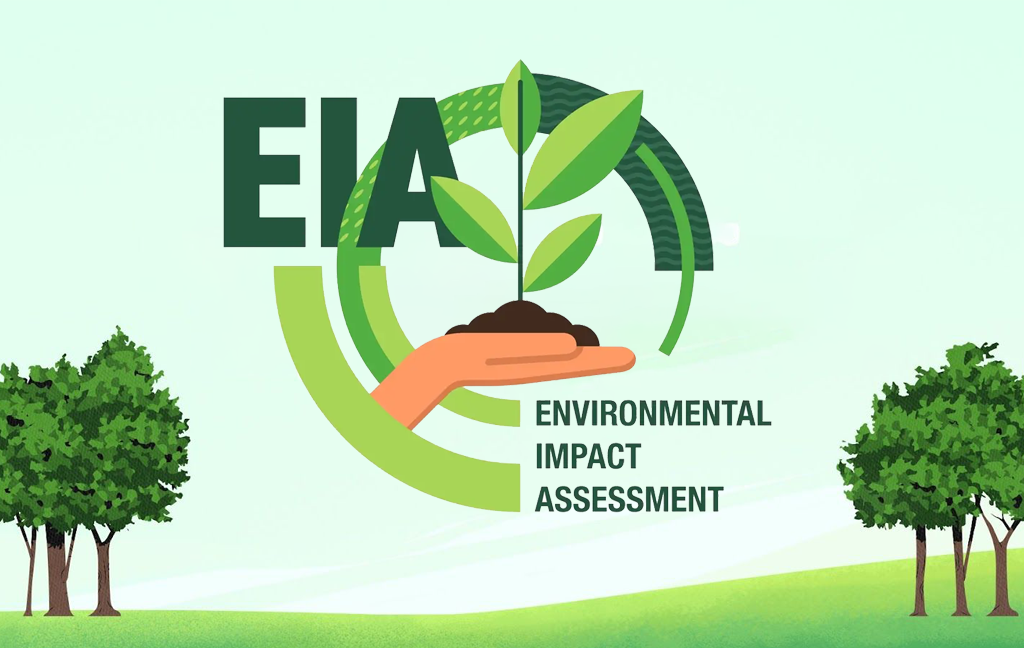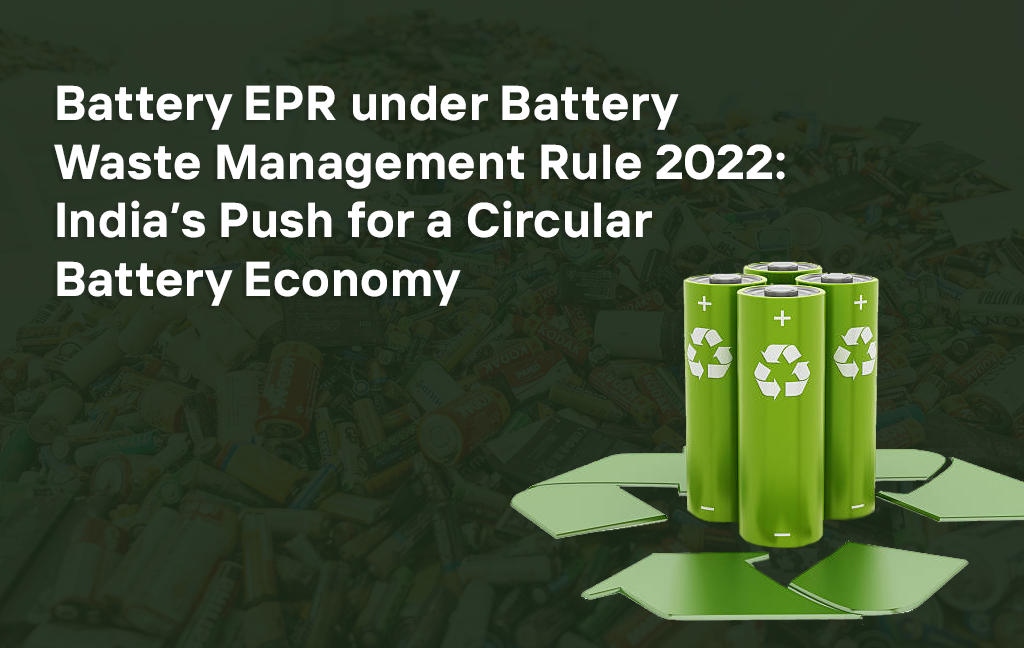Field Inspection for Compliance Reporting: A Comprehensive Framework for Sand Mining Projects

Introduction
Sand mining is crucial for infrastructure and construction, but it can seriously harm river ecosystems, groundwater, and local communities if not properly managed. The Government of India recognizes this risk requires grant of Environmental Clearance (EC) for sand mining operations under the EIA Notification, 2006, and its Amendments till date. Along with Grant of EC, operators must follow various laws, including the Environment (Protection) Act, 1986, the Air (Prevention and Control of Pollution) Act, 1981, the Water (Prevention and Control of Pollution) Act, 1974, the Wildlife Protection Act, 1972, and the Sustainable Sand Mining Management Guidelines from 2016 and 2020. To make sure sand mining operations comply with these regulations, field inspections take place followed by detailed reports to regulators. This process is systematic and relies on a clear framework to maintain transparency, accountability, and evidence-based decisions.
Methodological Framework for the Compliance Study
The compliance study for sand mining involves a step-by-step framework designed to provide a complete view of environmental, legal, and operational performance:
- Pre-Field Inspections
The success of compliance inspections relies greatly on preparation before entering the mining site. These preparations help the inspection team to understand regulatory requirements, environmental concerns specific to the site, and past compliance records. A thorough review of documents, permits, and equipment is conducted to determine baseline conditions and legal requirements. This helps ensure that experts enter the field well-informed about what needs to be done under EC and related laws.
- Collection and Review of Documents: Experts start by gathering and reviewing important documents related to the sand mining project. These include the EC letter and its conditions from MoEF&CC or SEIAA, the approved Mining Plan, Lease Documents, and permissions such as the Consent to Establish (CTE) and Consent to Operate (CTO) from the SPCB. Additional approvals such as forest clearance, the Sustainable Mining Plan, and prior compliance reports must also be reviewed when necessary. Supporting documents like the Environmental Management Plan (EMP), records from public hearings, baseline environmental data, and flow studies are also essential. They help verify the project’s environmental and social commitments. Maps and datasets, including geo-coordinates, cadastral maps, and topographic sheets, are critical for confirming that the mining area aligns with the boundaries set in the EC. Experts also review past inspection reports and previous compliance submissions to understand recurring issues and specific restrictions.
All document reviews must be contextualized within the relevant legal framework, including the Environment Protection Act, 1986, the Air Act, 1981, the Water Act, 1974, the Wildlife Protection Act, 1972, the MMDR Act, 1957, and national guidelines for sustainable sand mining.
- Permissions and Coordination with Stakeholders: Field inspections require cooperation with various government agencies and occasionally local communities to ensure access and support. This involves informing and possibly seeking approval from the District Environment Committee, the Mining Officer, the Regional Office of MoEF&CC or SEAC/SEIAA (through their online portal), local Pollution Control Board, Cooperation with the Forest Department, Irrigation Department, or Revenue Department is necessary. Often, the leaseholder or project operator is informed about the inspection to ensure collaboration and the availability of records on-site.
- Equipment and Tools for Field Inspections: After obtaining the necessary documents and permissions, experts prepare the required tools and equipment for field visit. Typically it includes a GPS-enabled device or phone for geotagging, a digital camera with timestamp and GPS features, and a structured compliance checklist. For environmental monitoring, air and water sampling kits should be brought along, and soil sediment corers might be needed for checking riverbed health.
Modern technologies like drones are essential for conducting aerial surveys of the project site. Basic measuring tools such as laser rangefinders, manual augers, and measuring tapes are necessary for checking excavation depths against permissible limits. Experts must also have personal protective equipment (PPE) like helmets, safety boots, reflective jackets, and gloves for their safety. Field notebooks, inspection forms, and digital records help maintain organized documentation of observations.
- On-Site Field Inspection and Ground Verification
Experts perform a structured physical assessment of mining activities. This involves checking boundaries, depth limits, riverbank stability, biodiversity protections, pollution control measures, worker safety, and transport operations. Evidence is gathered using geotagged photos, GPS readings, drone surveys, and sampling, which supports compliance assessments. This phase concentrates on verifying whether operations meet EC conditions and environmental safeguards.
- Technology used in Compliance Studies/Verification
Various tools and devices are used during inspections. This improves accuracy, detects violations, and helps assess long-term environmental changes.
- Drone Surveys for Aerial Monitoring: Drone inspections provide high-resolution aerial images and 3D maps of riverbeds and mining sites. This help regulators to measure the actual area being extracted, compare it with approved mining plans, and detect illegal or excessive excavation in real time.
- GIS and Remote Sensing Applications: Geographic Information System (GIS) platforms and satellite remote sensing tools overlay approved lease boundaries with actual field data. This allows for precise tracking of river shapes, erosion patterns, floodplain encroachments, and unauthorized mining activities.
- Groundwater Monitoring Devices: Instruments like piezometers and automatic water-level recorders monitor how sand mining affects aquifers and groundwater levels. Continuous data collection helps in early detection of over-extraction risks, depletion of base flow, and threats to drinking water sources.
- Digital Compliance Dashboards: Data from inspections, drones, sensors, and sampling can be integrated into digital dashboards. These platforms enable regulators and operators to track compliance status almost in real time. They can generate alerts for deviations and improve overall transparency in monitoring.
- Geotagged and Timestamped Evidence: Using mobile apps and GPS-enabled cameras, experts capture geotagged photographs and timestamped videos. This ensures the authenticity of field observations, prevents data tampering, and strengthens the credibility of compliance reports.
- Data Analytics and AI Integration: Analytics tools and artificial intelligence can process large volumes of inspection data, satellite images, and monitoring results. They detect patterns, predict risks, and prioritize areas that need strict enforcement.
- Data Collation, Analysis and Report Preparation
After the field visit, experts combine their findings into a detailed compliance report. This report should include a matrix connecting each EC condition to its compliance status (Complied/Partially Complied/Not Complied), backed by photos and geotagged evidence. Drone imagery and GIS maps add credibility. The report also points out gaps and instances of non-compliance, evaluates their potential ecological and social effects, and suggests corrective actions with realistic timelines. For serious violations, recommendations may include penalties or suspension of operations. Finally, the report goes to SEIAA or MoEF&CC, the SPCB, and the District Mining Task Force, ensuring that multiple regulatory agencies can act on the findings.
- Reporting & Regulatory Submission: The findings are put together in a structured compliance report, featuring a compliance matrix for each condition, photographic and geospatial evidence, corrective action plans, and recommendations. This report is submitted to SEIAA/MoEF&CC, SPCB, and the District Mining Task Force for enforcement and ongoing monitoring. This framework not only ensures legal compliance but also strengthens environmental governance by establishing a transparent, verifiable, and replicable system for monitoring sand mining.
Importance of Structured Compliance Study
- Safeguarding Environmental Sustainability: A clear compliance framework makes sure that sand mining operations do not harm rivers, groundwater, riparian ecosystems, or biodiversity. It acts as a preventive measure against irreversible ecological damage.
- Legal Protection for Operators and Regulators: By following Environmental Clearance (EC) conditions and relevant acts, both project operators and regulatory authorities lower the risk of legal violations, penalties, or lawsuits.
- Promoting Transparency and Accountability: Structured compliance studies depend on evidence-based inspections, geotagged photographs, drone surveys, and documented reports. This builds accountability in reporting and reduces the chances of misrepresentation.
- Community Trust and Social Acceptance: Transparent compliance processes address the concerns of local communities and stakeholders. Showing adherence to environmental safeguards builds public confidence and reduces conflicts.
- Long-Term Resource Sustainability: By ensuring compliance with sustainable sand mining guidelines, the framework helps balance economic needs with ecological conservation. This way, mining can continue without depleting natural resources.
Conclusion
The process of field inspection and compliance reporting for sand mining operations is not merely a legal obligation; it is a vital tool for balancing development with environmental stewardship. A strong framework, starting with pre-field preparations and extending through methodical inspections to thorough reporting, helps ensure that mining activities comply with EC conditions and broader environmental protections. By integrating document reviews, stakeholder involvement, field assessments, technological monitoring, and transparent reporting, regulators and operators can collaborate to promote sustainable sand mining practices that meet developmental needs while protecting ecological priorities.
Final Words
At Aseries Envirotek India Private Limited, we believe that responsible sand mining is not just a regulatory requirement; it is a shared duty. We need to protect rivers, ecosystems, and communities for future generations. With operations across India, our expertise includes field inspections, compliance audits, and environmental monitoring. As a trusted compliance company, we ensure that every sand mining project meets Environmental Clearance conditions and strictly follows all relevant laws.
We use scientific methods, modern technology, and community engagement to create clear, evidence-based compliance reports that can withstand scrutiny. By partnering with us, mining operators, regulators, and local authorities can work toward a sustainable mining model. This model balances development and ecological protection.
Join us in setting new standards for environmentally responsible mining practices. Connect with Aseries Envirotek India Private. Limited. today to help build a future where compliance drives sustainability.






